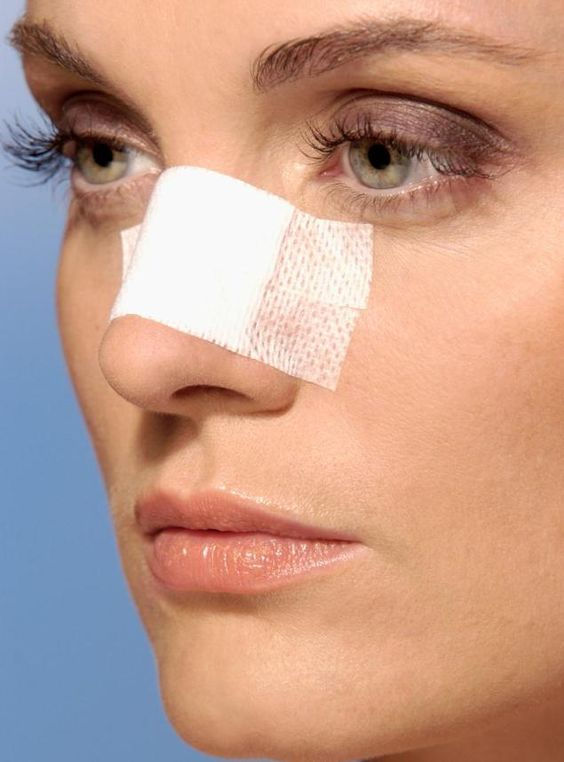A Guide to Recovery After Rhinoplasty: What to Expect in Dubai
- Dua e Zahra
- Oct 24, 2024
- 4 min read
Rhinoplasty, commonly known as a nose job, is a popular surgical procedure that enhances the nose's appearance or improves its function. While many people focus on the aesthetic changes and benefits of rhinoplasty, understanding the recovery process is equally important. If you're considering Rhinoplasty Dubai, here’s a comprehensive guide on what to expect during your recovery.
Understanding the Recovery Timeline
The recovery period after rhinoplasty can vary significantly from person to person. However, there are general stages you can anticipate:
First Few Days
Initial Swelling and Bruising: The first 48 hours post-surgery typically see the most swelling and bruising. This is a natural response to the surgery.
Pain Management: You may experience discomfort, which can be managed with prescribed pain medications. It's crucial to follow your surgeon’s guidelines regarding medication.

One Week Post-Surgery
Cast Removal: If your surgeon applied a cast or splint to your nose, it will usually be removed after about one week.
Decreased Swelling: By the end of the first week, much of the initial swelling and bruising will begin to subside, and you will start to see the early results of your surgery.
Two to Four Weeks
Return to Normal Activities: Most patients can resume light activities, including work and social engagements, within two weeks. However, you should avoid strenuous exercise for at least four weeks.
Gradual Healing: Swelling continues to decrease, and any lingering bruising should resolve. Your nose will still be sensitive, so avoid any impact or pressure.
Months 1-6
Ongoing Healing: Full healing can take several months, with subtle changes occurring over time. The final shape of your nose may not be fully visible until up to a year after surgery.
Follow-Up Appointments: Regular check-ups with your surgeon are essential to monitor healing and ensure everything is progressing as expected.
Tips for a Smooth Recovery
Follow Your Surgeon’s Instructions
Your surgeon will provide specific post-operative care instructions tailored to your needs. Following these guidelines is crucial for a smooth recovery. Key instructions often include:
Medication Regimen: Take prescribed pain relief and antibiotics as directed.
Wound Care: Clean and care for your surgical site according to your surgeon’s instructions.
Activity Restrictions: Avoid strenuous activities and heavy lifting for a few weeks.
Managing Swelling and Discomfort
Swelling is a common side effect of rhinoplasty. Here are some effective methods to manage it:
Cold Compresses
Applying cold compresses to the nose and surrounding areas can help reduce swelling. Use them in intervals of 15-20 minutes during the first few days post-surgery, avoiding direct contact with the surgical site.
Head Elevation
Keeping your head elevated while sleeping can also help minimize swelling. Use extra pillows or a wedge pillow to keep your head above your heart during the night.
Stay Hydrated and Nourished
Proper nutrition and hydration are vital for recovery. Focus on:
Hydration: Drink plenty of water to stay hydrated, which aids in healing.
Balanced Diet: Consume a variety of fruits, vegetables, lean proteins, and whole grains to provide essential nutrients for recovery.
Avoiding Certain Activities
To ensure a smooth recovery, it's essential to avoid specific activities:
Physical Activity
Avoid any strenuous exercise, including running, lifting heavy objects, or vigorous sports, for at least four weeks. Straining your body can increase blood flow to the nose, resulting in additional swelling and complications.
Sun Exposure
Protect your nose from direct sunlight, especially during the initial months of recovery. UV rays can darken scars and impact the healing process. If you need to be outdoors, wear a wide-brimmed hat and apply sunscreen to protect your skin.
Smoking and Alcohol
Refrain from smoking and drinking alcohol during your recovery. Smoking reduces blood flow and can delay healing, while alcohol can dehydrate your body and interfere with medication.
Monitoring Your Recovery
Keeping an eye on your recovery is crucial for identifying any potential complications:
Watch for Unusual Symptoms
Contact your surgeon if you experience:
Excessive Swelling or Bruising: If swelling does not improve after a few days, it may require attention.
Increased Pain: Pain that does not subside with prescribed medication should be reported.
Signs of Infection: Look for fever, persistent redness, or discharge from the surgical site.
Attend Follow-Up Appointments
Regular check-ups are essential to monitor your recovery and ensure that your nose is healing properly. These appointments allow your surgeon to address any concerns and adjust your care plan if necessary.
Patience and Emotional Support
Recovering from rhinoplasty requires patience and emotional support. Here are some tips to help you cope:
Embrace the Healing Process
Understand that full recovery takes time. Swelling and bruising are normal, and the final results may not be immediately visible.
Seek Support
Lean on family and friends for help during your recovery. Their assistance with daily tasks can ease your burden and provide emotional support. Consider joining a support group for individuals recovering from cosmetic procedures for shared experiences and encouragement.
Conclusion
Recovering from rhinoplasty in Dubai can be a smooth and rewarding process with the right preparation and mindset. By understanding the recovery timeline, following your surgeon's instructions, managing swelling, and avoiding specific activities, you can promote optimal healing. Remember to stay patient and seek support when needed. Ultimately, your dedication to the recovery process will play a significant role in achieving the beautiful results you desire.



Comments